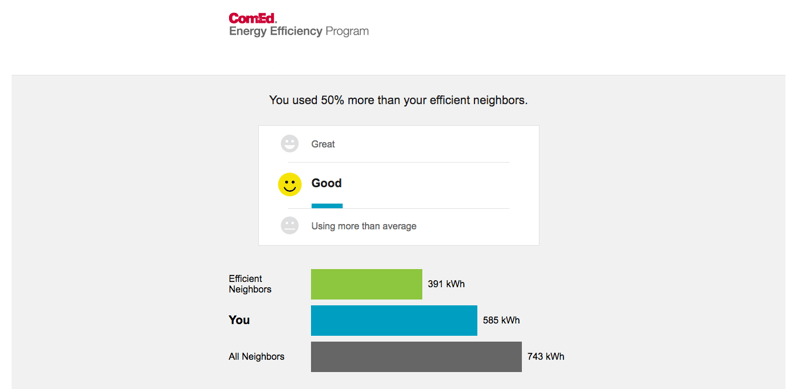

J&C Blog
Find all the latest marketing trends on the J&C Blog.

Find all the latest marketing trends on the J&C Blog.
The U.S. utility and energy sector is in the middle of a rapid transformation due to smart technology and distribution generation, increased data and more empowered customers.
This evolution is driving big changes in energy marketing as utility companies move beyond simply selling electricity, gas or water.
For energy marketers and communications teams, this is both an exciting time and one full of potential pitfalls and headaches.
Click here to download 12 Powerful Examples of Energy Marketing.
Energy companies want customers to understand the complexity of the energy industry and how many projects are constantly underway to improve service and customer satisfaction. Customers want improved, personalized communications; innovation; and environmental responsibility.
The answer to these divergent aspirations is smart marketing.
In my opinion, only by designing programs with the user in mind can a utility change perception and improve customer satisfaction. Utilities that deliver energy marketing campaigns and content that demonstrates authenticity provide educational value and demonstrate their investment in the future.
Explore five powerful energy marketing examples that have proven effective at bridging the communications gap between utilities and their customers across the United States.

If you’re from Denver or have visited, you know that summers are hot and dry and years of drought had depleted the area’s water supply. In an effort to encourage water efficiency, Denver Water launched the “Use Even Less” campaign, with outdoor advertising featured throughout the city. The memorable, funny message had the ability to drive home the idea of using only what you need by encouraging people to consider just how much water they were really using every day.
Scientific studies have shown that humor positively impacts engagement. Denver Water’s campaign demonstrates that humor not only engages viewers the first time they see a funny advertisement, it also can create impactful change in customer behavior. The Use Even Less campaign resulted in a 40% decrease in Denver Metro’s water usage in 2014.

Duke Energy’s Lower My Bill Toolkit is an interactive piece of web content that enables customers to take ownership of their energy usage and learn about the various ways they can save. Resources are bucketed into six categories:
Each category features a number of different resources, creating a multi-touch engagement machine that’s easy for users. The user experience is simple, the categories are action-oriented and the design is mobile-friendly. With each offered up solution, Duke Energy links to corresponding pages with more details — decluttering the main pages and still providing a complete educational experience.

A website is your most powerful energy marketing tool, which is why the Alabama Power website is featured as one of our top picks. And we’re not the only ones in love with the site. Alabama Power’s website was rated particularly high by customers for overall ease of use in the utility website category by J.D. Power.
The home page features top functions like customer support and online bill pay services above the fold, while also featuring various helpful pieces of content that educate customers about advertising energy efficiency, selecting financing and the latest recommended smart products on the market. The multiple points of engagement and user experience-based design make this a winning site.

Energy efficiency isn’t a top-of-mind concern for many customers. After all, only 17% of utility customers self-identify as “true believers” and are true converts to greening, according to an energypulse™ Shelton Group survey. That leaves 83% who need more convincing to reduce energy usage. ComEd takes this educational process on with a monthly energy efficiency email that personalizes the energy use experience beyond billing.
Data has enabled ComEd to generate an email that compares customers to their neighbors and visually demonstrates energy use trends over the course of a year. Just as customers realize the impact of their energy use, ComEd takes the messaging one step further with suggested helpful resources to inspire action.

Not every sewer district is willing to discuss the day-to-day issues impacting sanitation, but the Northeast Ohio Regional Sewer District (NEORSD) takes the issue on with humor. The NEORSD blog is an entertaining, informative destination for those in the Greater Cleveland area curious about water quality, sanitation and the best poo-emoji Halloween costumes on the market. The blog does a strong job of educating customers about the latest developments and news impacting service between more playful posts. All too often, legal requirements or technical subjects can bog content down, making reading more of a chore and less enjoyable for the user. NEORSD’s mixture of expertise-demonstrating news and lighthearted posts has been able to engage readers and encourage an avid follower base of about 8,900 — something many utility blogs still struggle with today.
Want more great utility marketing examples?
The J&C team has collected and evaluated 12 samples that we enjoy in the “12 Powerful Examples of Energy Marketing” eBook. Click here to discover how other utilities are communicating with their customers with great results.
Topics: Utility Industry
303 E Wacker Drive, Suite 2030
Chicago, IL 60601
Phone: 312-894-3000
Fax: 312-894-3005